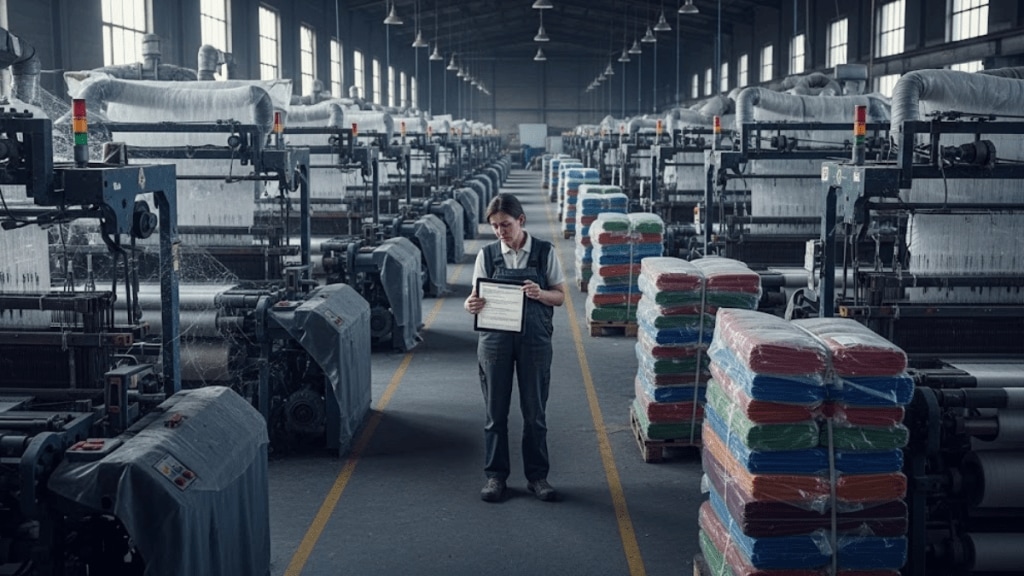For 38-year-old V Dinesh Kumar, a small apparel manufacturer based out of this industrial town located on the banks of the Noyyal river in western Tamil Nadu, the fear that had been gnawing at him for weeks became a reality the other day. His first order from a US buyer was cancelled through a brief email, wiping out months of preparations and over ₹50 lakh from his savings invested in fabrics, accessories and capacity expansion.
“It’s a huge blow for a company of our size,” says Kumar, proprietor of Woodrose Apparel, a micro enterprise which employs around 70 people, and exports cotton infant and baby clothes.
Until recently, Woodrose was exporting mainly to Europe and the UK, supplying 30,000–40,000 packs of infant wear each month. In July, Kumar secured his first US order — 50,000 packs, or one lakh pieces, worth ₹1.5 crore. He stocked up on raw materials, upgraded machinery, and even planned a trip to meet potential buyers and attend trade shows in the US. “All those plans have now gone,” he says. Today, the materials lie untouched in his workshop — “dead stock,” as he calls it.
“For a small player like me, ₹50 lakh is huge. We don’t have bank funding. We use our own capital, and if that gets stuck, the entire supply chain freezes,” he says.
Kumar’s plight mirrors that of thousands of micro-entrepreneurs in this knitwear hub. Units located here export about ₹45,000 crore worth apparel each year — with over half of the merchandise going to the US. That model has been upended by Washington’s recent decision to impose a 50% tariff on Indian goods, dealing a severe blow to an industry of 2,500 exporters and nearly 20,000 standalone units, 96% of them small and medium enterprises (SMEs).
Tariffs trigger uncertainty across Tiruppur
The relentless rhythm of looms and whirring of spindles — long synonymous with livelihoods here — has been replaced by an uneasy silence. “It feels like the Covid lockdown when everything stopped,” says Kumar Duraiswamy, joint secretary at the Tiruppur Exporters Association (TEA). “Even the fruit vendor on the street asks me when this tariff issue will end. That’s how deeply it’s being felt.”
Duraiswamy runs Eastern Global Clothing, which exports knitted garments including baby and infant wear, women’s clothing, joggers and licensed apparel for major brands like Disney. The US accounted for 30% of his business, with the rest in Europe and the Gulf. “Even at 25% additional tariff, we could manage, because the gap with competing countries was just 5%,” he says. But when the US President Donald Trump added another 25% — taking the total to 50% — orders stopped overnight The full tariff is to take effect from August 27. Key rivals like Bangladesh, Vietnam and Sri Lanka face only around 20% tariffs or less, making India uncompetitive almost instantly.
Tiruppur’s strength lies in core products — undergarments, innerwear, vests, briefs, infant bodysuits and other fast-moving basics. Most exporters operate on a cost-plus-5% model, a high-volume, low-margin business. “Undergarments are produced in bulk, but the margins are razor thin. At 50% tariff, it’s not sustainable,” Duraiswamy says.
The shock is amplified by the cluster-based nature of the industry. For instance, the making of a single T-shirt can involve eight or more stages — spinning, knitting, dyeing, finishing, sewing, labelling and packaging — plus value-added processes like printing and embroidery, often handled by separate specialist units. “When orders stop, every link in that chain is hit,” says N Thirukkumaran, general secretary of TEA.
Some exporters, he notes, have 100% exposure to the US, others 80% or slightly less, “but a 50% tariff is crippling across the board.” If the issue isn’t resolved in the next few weeks, layoffs and even unit closures are inevitable, he warns, since 95% of Tiruppur’s units are SMEs without the reserves to absorb such shocks.
Calls grow for relief and new trade pacts
Thirukkumaran’s firm, Esstee Exports, however, is a custom manufacturer of high-end fashion for men, women and children, with less than 10% exposure to the US and 90% to Europe. But for players like him, there is a different kind of challenge. With half of Tiruppur’s volumes lost to the US market, everyone — from the biggest exporters to the smallest units — is competing for the same buyers in Europe and the UK.
However, the US market’s pull is hard to replace. On average, a US household spends $1,500–2,000 a year on clothing and footwear, buying around 68 pieces annually. India supplies about 8% of that — roughly six to seven items per American per year. “That’s the sheer size of demand we’re talking about,” Duraiswamy says, adding that factories built for the scale of US orders can’t simply retool for Europe’s smaller, more seasonal demand.
Industry players are now urging the Indian government to step in. They want Covid-era relief measures such as loan moratoriums, extending the NPA classification period to 180 days from 90, and reinstating the interest equalisation scheme scrapped in December. They also seek the removal of the ₹50 lakh threshold on packing credit and stress that rating agencies must factor in the current crisis.
Thirukkumaran believes the longer-term solution lies in speeding up free trade agreements with the European Union (EU) and Gulf Cooperation Council (GCC) nations. “Nearly 30% of India’s apparel exports already go to Europe and 10% to the UK. With an EU FTA, that 40% could grow significantly, reducing our dependence on the US over time,” he says.
For Woodrose Apparel’s Kumar, the future has come full circle. Just months ago, he was preparing to reduce his reliance on Europe and the UK from 100% to 70%, betting on the US to take up the remaining 30%. Now, with his American dream on hold, he is back to chasing orders in the very markets he once planned to scale down — hoping they can keep his looms running until better days return.


